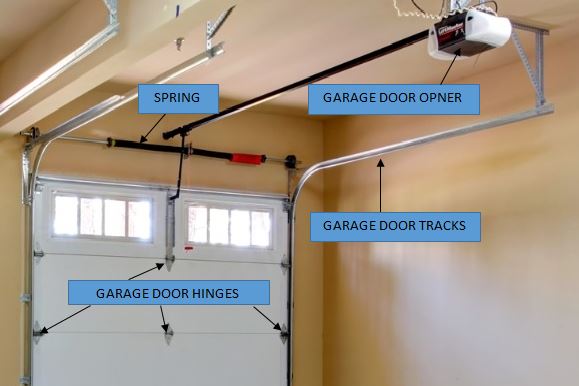Types of Garage Door Maintenance
Where is the failure?
The garage door spring system is the most common problem that homeowners experience. The automatic garage door operator or the garage door opener is the second most common malfunction. If the door can be closed, for safety purposes, we will shut the garage door first. The door can be slammed shut strongly with no control, which can damage the garage door itself and/or physically harm a person.
|
 |
First, we need to isolate the two systems to diagnose a failure: the garage door and the garage door opener. To do that, we disengage the garage door opener from the garage door itself by pulling down the red rope that hangs down from the garage door opener. After that, we will start to exercise the garage door opener up and down from close to open position without the door load. When pressing the wall button or the remote controller to open the garage door, the opener's carriage should move back toward the motor and stop right before the mechanical hard stop.
When you press the garage door opener wall button or the remote controller, the garage door's carriage should move toward the door and should stop about 2"-12" from the hard stop. If all functions properly, as described, we need to diagnose the garage door itself. To check the garage doors functionality, you need to open and close the garage door manually. This can be done by holding the door from the inside by the handle; if there is no handle, you need to prevent moving the door when your fingers are between the hinges or the sections as they can pinch your fingers. When you lift the door you should let the door stay still when it's 2-3 feet from the ground, and the garage door should stay still without drifting up or down if the springs are installed properly. Now move the door all the way to open position, and down to the ground, the garage door should move smoothly without any obstruction during the travel and without using excessive force.